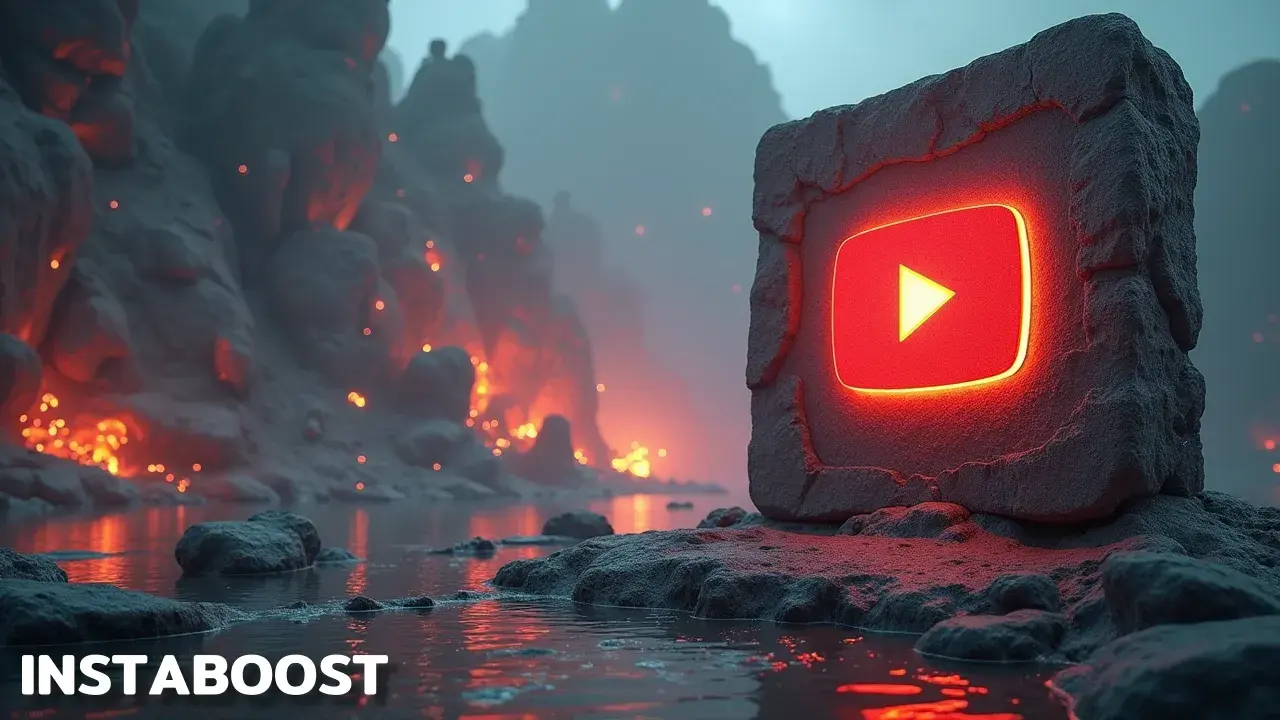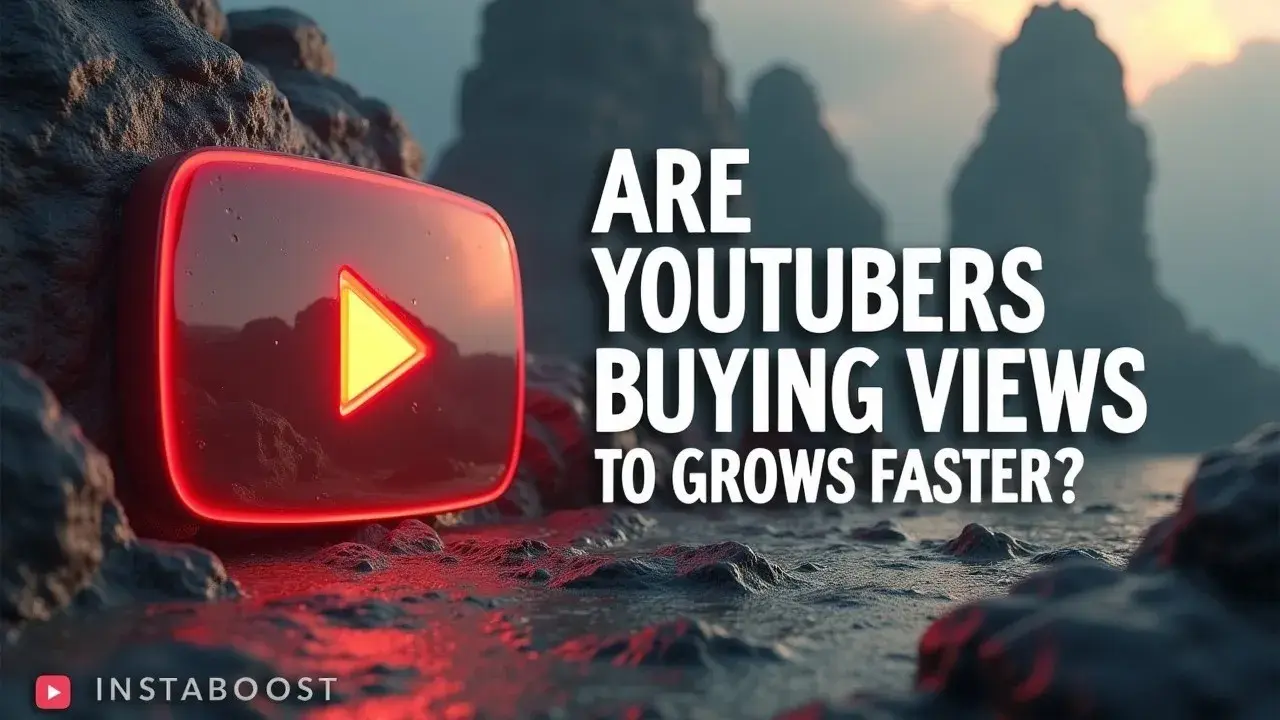Are YouTubers Buying Views to Grow Faster?
Some creators do purchase views, and results hinge on timing, content fit, and measurement. A small boost immediately at publishing, tracked closely over the first 48 hours with retention data, can help when the video already matches audience interest. Real engagement, quick replies, and consistent watch time are the signals that sustain discovery beyond any initial lift. The smart path is modest seeding, careful analytics, and iterating to align content with viewer behavior.
The Quiet Accelerator Behind “Organic” Breakouts
Some creators quietly test paid view boosts the way startups test ad spend: targeted, time-bound, and judged against real engagement. The question isn’t whether YouTubers are buying views to grow faster. It’s whether those views are qualified and aligned with what YouTube actually rewards. The discovery system prioritizes watch time, session starts, retention curves, click-through rate, and authentic interactions like human-sounding comments. A small, reputable push – matched to the audience and launched at publish – can seed enough data for the algorithm to learn who the video is for, which is the practical lens through which people research how to expand YouTube reach fast without confusing the signals that drive recommendations.
If the video holds attention and sparks real comments, that early momentum can compound into genuine discovery. If it misses, the analytics show it with flat retention, weak CTR, and no spillover into suggested videos. This is where smart use beats blanket rules. Buying low-quality views just to inflate the counter muddies analytics, skews future testing, and rarely triggers recommended traffic, while a modest, targeted promotion paired with creator collabs, pinned comments that invite response, and clean measurement in the first 48 hours can validate a thumbnail, title, and hook before you scale.
Treat it like a controlled experiment. Pay for reach, judge by retention. That’s how you separate a vanity spike from a growth lever. For anyone researching how to get more YouTube views, the takeaway is simple: there’s a legitimate path when the boost is reputable, audience-matched, and tied to a testing loop that watches the right signals. Used this way, a paid nudge doesn’t replace organic growth – it primes it.
Treat it like a controlled experiment. Pay for reach, judge by retention. That’s how you separate a vanity spike from a growth lever. For anyone researching how to get more YouTube views, the takeaway is simple: there’s a legitimate path when the boost is reputable, audience-matched, and tied to a testing loop that watches the right signals. Used this way, a paid nudge doesn’t replace organic growth – it primes it.

Proof That “Buying Views” Can Be Legit: How Pros Validate It
We stopped guessing when we started seeing the same signals repeat. The creators who quietly test paid view boosts aren’t chasing vanity; they’re benchmarking qualified traffic against what YouTube actually rewards: session starts, average view duration, click-through rate, and genuine comments. It’s the same discipline startups apply to ad spend – tight audiences, clear hypotheses, and a kill switch if retention sags. Treated like a controlled experiment, buying YouTube views can be a credibility builder, not a crutch. Aim at audiences already primed for your topic, cap budgets to protect clean analytics, and judge results against a matched organic control.
Reputable placements – YouTube Ads, relevant creator collabs, or targeted promotion where audience intent aligns – tend to deliver watch time that sustains discovery instead of spiking and crashing. The practical path looks like this: add a modest boost at publish, study the first 48 hours for second-by-second retention, and only double down when the lift comes with real comments and downstream session growth. Low-quality traffic muddies your data and can stall browse and home recommendations. Qualified traffic clarifies your hook and thumbnail effectiveness, and the same logic applies when you’re sorting out whether to get more YouTube subscribers through aligned placements versus chasing empty volume.
So the useful question isn’t “did you buy views?” but “were they aligned with your topic and measured against real engagement?” With “are YouTubers buying views to grow faster” rising as a search term, credibility comes from transparent testing loops and safeguards – frequency caps, audience exclusions, and incremental lift analysis. The crisp insight is simple: buying attention isn’t the cheat. It works when intent is matched, measurement is honest, and the algorithm can read it as early momentum, not manipulation.
From Paid Sparks to Flywheel: The Framework That Makes “Buying Views” Pay Off
I stopped building funnels and started building frameworks. Funnels chase a straight line. Frameworks set the inputs, signals, and guardrails that keep you honest when you test paid view boosts on YouTube. The spine is simple: one hypothesis per upload, one channel for the boost, one clean window to measure, and one decision based on retention and session starts. Put a modest, reputable promo on at publish, geo- and interest-targeted to match your thumbnail promise, and watch the first 48 hours closely. Compare average view duration to organic, click-through rate against impressions, and whether the comments read like real viewers or copy-paste; some teams also sanity-check peripheral signals like when they improve channel stats with more likes to ensure engagement patterns still track with retention.
If the retention curve holds, let it run. If the mid-roll drops off a cliff, pause it and adjust the hook or topic fit. This isn’t “buying views” to fake virality. It’s paid sampling to validate whether the content can earn algorithmic discovery. Pair the boost with creator collabs and pinned comments to seed genuine discussion, because YouTube rewards session growth, not raw traffic. Keep analytics clean by isolating variables.
One thumbnail variant, one title test, separate campaigns per audience. Use reputable networks or YouTube’s own ads so you can cap frequency, control placements, and avoid junk inventory. Cheap clicks blur the read and slow compounding. The non-obvious win is this: when a video proves it can retain a qualified audience, route a small evergreen budget to keep the flywheel warm between uploads, then move spend to new topics that show similar retention signatures. That’s how YouTubers buying views strategically shift from spikes to compounding momentum, and it scales because the framework, not the spend, makes the decision.
The Case Against Panic: Why “Buying Views” Isn’t a Dirty Word When You Treat It Like Data
This platform doesn’t reward consistency. It rewards spectacle. That’s why “buying views” feels radioactive – people picture botted spikes and empty vanity. If you’ve followed the earlier proof and framework, the pushback is simple: at best, you’re not buying views. You’re buying a clean test of demand. The algorithm cares about session starts, average view duration, click-through rate, and real comments, not your receipt.
If your boost is reputable, audience-matched, and time-boxed to publish, you’re not faking gravity – you’re checking whether your hook and topic can catch oxygen. Bad traffic shows up fast: retention drops, comments feel brittle, and suggested impressions stall. Good traffic does the opposite – longer sessions, higher save rates, and a lift in browse and suggested after the paid window closes. That’s why creators pair targeted promotion with creator collabs, pinned comments that invite discussion, and a clean analytics window to isolate impact; some even sanity-check providers by looking for audience matching over raw volume, including options like affordable YouTube views that work, before they test.
If you’re worried about fake fans, build a testing loop: small spend, tight geo and interest match to the thumbnail promise, a kill switch if watch time dips, and a follow-up video that serves the same intent. It’s like search ads for a startup – costly when misaligned, efficient when the offer lands. The smart path isn’t abstinence. It’s alignment and measurement. Buying views to grow faster works when your content already earns its keep with retention signals, when comments feel human, and when the paid spark hands off to organic discovery within 48 hours. That’s not cheating the YouTube algorithm. It’s giving it a clear read.
From Spark to Signal: Your Closing Playbook
If you’re still weighing it, good. That’s where this choice lives. The real question isn’t whether YouTubers buy views. It’s whether you’ll use that lever with enough discipline to turn a spark into a signal. Treat a modest, reputable promo as an accelerant, not a crutch. Match it to your thumbnail promise, target the right geo and interests, and launch at publish so the first 48 hours tell you something you can act on.
The win condition isn’t the receipt. It’s the retention curve, session starts, click-through rate, and real comments that follow. Pair any boost with creator collabs that bring qualified viewers, pinned comments that seed discussion, and end screens that extend sessions; if you’re validating distribution levers, credible options exist, including this trusted way to buy YouTube shares, but the discipline is in how cleanly you measure.
Keep the testing loop clean. One hypothesis per upload, one boost channel, one measurement window, one decision. If the data sings with solid average view duration, rising suggested impressions, and engaged chat, scale thoughtfully on the next video rather than retroactively.
If it stalls, pivot the hook, thumbnail, or topic fit before spending again. That’s how buying views becomes buying clarity. The non-obvious insight: early momentum doesn’t change the ceiling. It reveals it faster. When your content – market fit is close, a targeted promotion turns buried potential into discoverable proof the algorithm can amplify. When it’s off, the same spend saves weeks by showing you why. So yes, growth can be bought when what you’re really purchasing is better measurement. Stack quality content, clean analytics, and a qualified audience, and that small paid lift becomes the flywheel starter that compounds into organic reach. That’s how you grow faster on YouTube without losing the plot.















